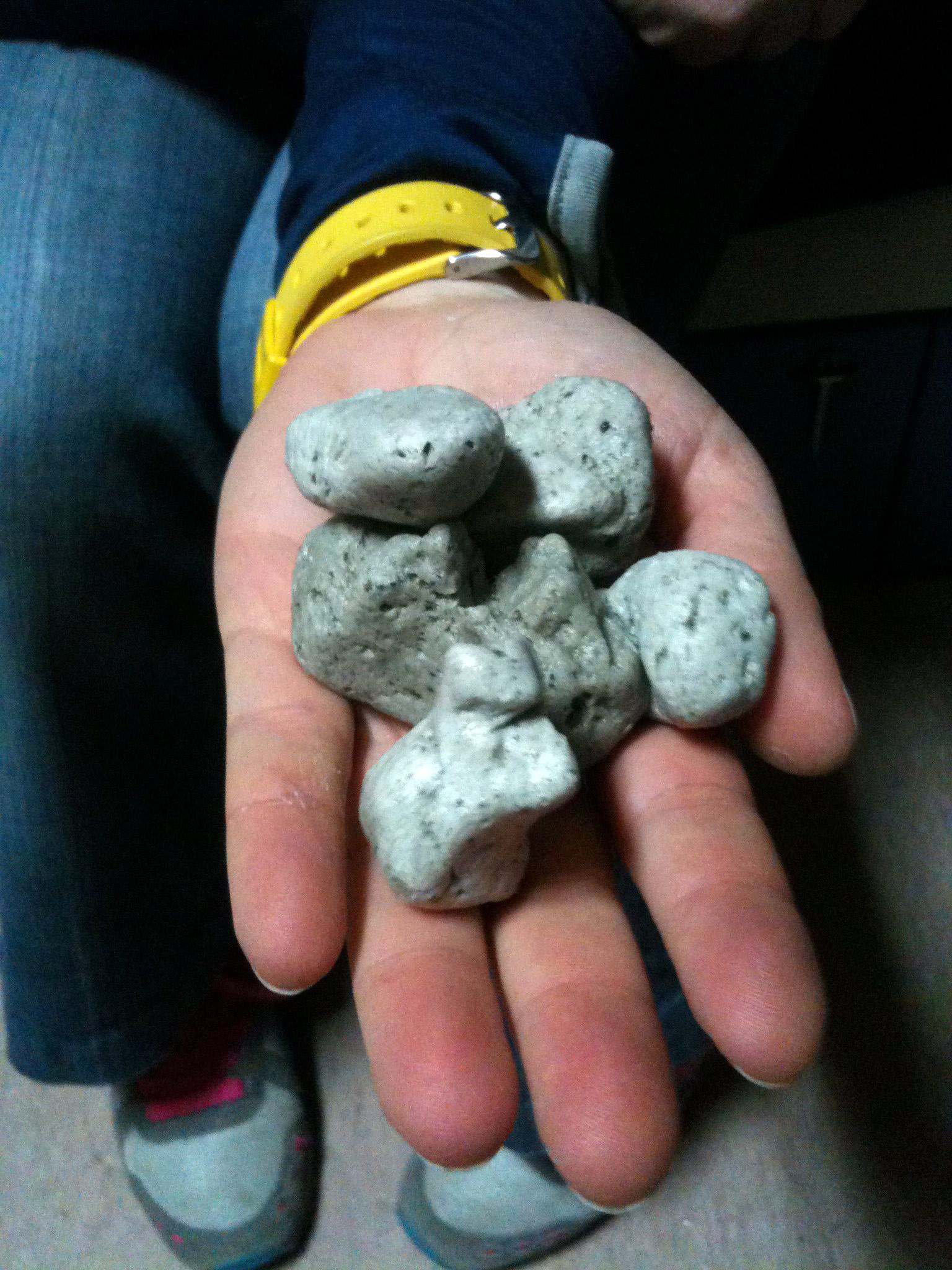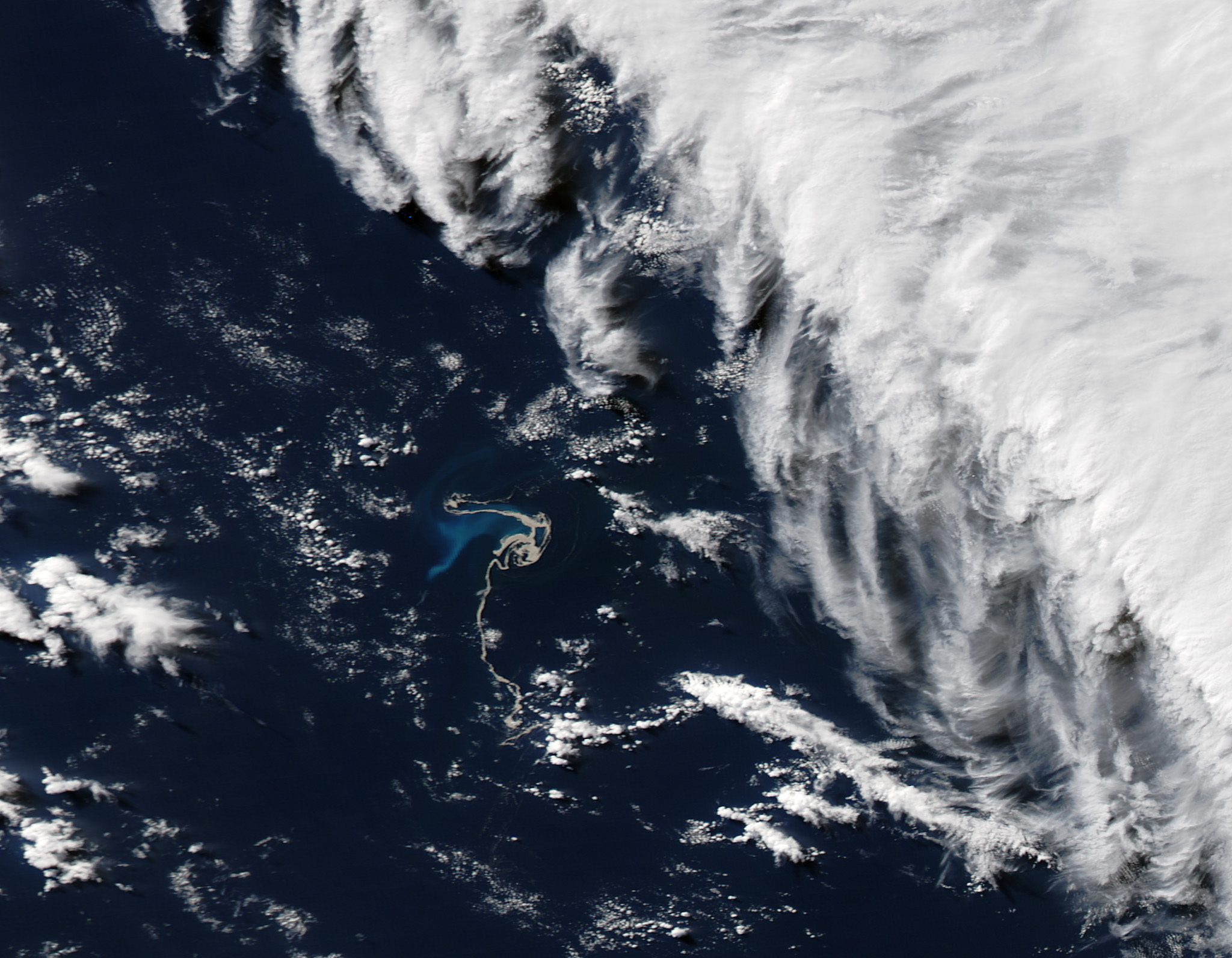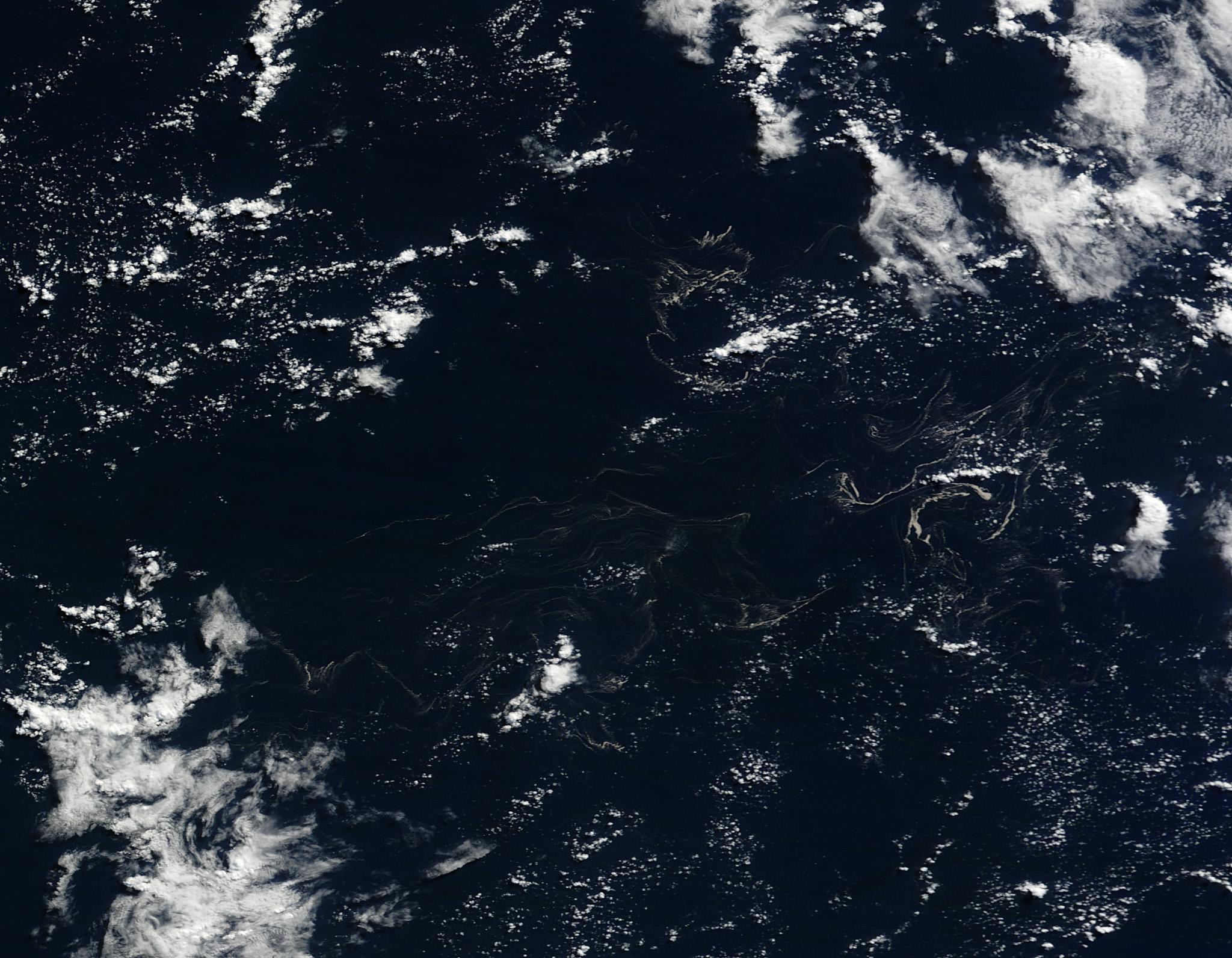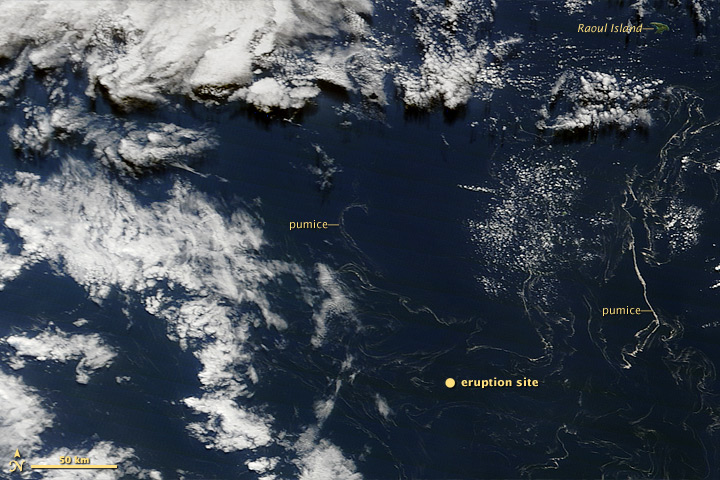quote:'Stenen ijsberg' drijft in Stille Oceaan
WELLINGTON - In de Stille Oceaan drijft een groot cluster van vulkanische steen, met de omvang van bijna 26.000 vierkante kilometer (bijna even groot als BelgiŽ) . Dat meldde de marine van Nieuw-Zeeland vrijdag.
Het lijkt op een ijsberg en bestaat uit lichtgewicht puimsteen, dat is uitgestoten door een vulkaan onder water, aldus de marine.
De 'stenen ijsberg' werd donderdag door een vliegtuig van de luchtmacht ontdekt, ongeveer 1000 kilometer uit de kust van Nieuw-Zeeland. De marine werd gewaarschuwd en die stuurde er een schip op af.
„Het was het vreemdste wat ik heb gezien in 18 jaar op zee”, concludeerde luitenant Tim Oscar van het marineschip Canterbury. „Zo ver als ik kon zien, lag een veld puimsteen dat op en neer bewoog met de deining.”
Wetenschappers die met het marineschip meevoeren, denken dat de puimsteen afkomstig is van de vulkaan onder water Monowai, die onlangs actief was
Aan de hand van deze foto zou je niet zeggen dat dit drijft!

Vulkaan pumice is erg licht, wat enorme stenen lijken kan je zo boven je hoofd tillen. Was paar weken geleden in de Valley of Tenthousand Smokes in Alaska waar enorm veel pumice ligt en als je het in het water gooide bleef het gewoon drijven, erg apart.quote:Op vrijdag 10 augustus 2012 14:11 schreef RemcoDelft het volgende:
Ik zou wel een filmpje vanaf het schil willen zien i.p.v. vanuit het vliegtuig...
Aan de hand van deze foto zou je niet zeggen dat dit drijft!
[ afbeelding ]
Ik heb puimsteen als filtermateriaal in de filterbak van mijn vijver..(in een zak met een Ťchte steen erop..anders blijft het drijven;)quote:Op vrijdag 10 augustus 2012 15:04 schreef mouzzer het volgende:
[..]
Vulkaan pumice is erg licht, wat enorme stenen lijken kan je zo boven je hoofd tillen. Was paar weken geleden in de Valley of Tenthousand Smokes in Alaska waar enorm veel pumice ligt en als je het in het water gooide bleef het gewoon drijven, erg apart.
quote:Pumice linked to dormant volcano with no active history until last week
A swarm of more than 150 earthquakes over two days last month caused a previously dormant volcano to erupt beneath the Pacific Ocean, a scientist said Monday.
The eruption of the Havre Volcano, about halfway between New Zealand and Tonga, is believed to have caused a floating island of pumice larger than 4,000 square miles that was encountered by a New Zealand navy ship last week.
Cornel de Ronde, principal scientist of New Zealand’s Institute of Geological and Nuclear Sciences, told Radio New Zealand the source of the pumice had been identified in cooperation with French researchers in Tahiti who monitor earthquakes in the southwest Pacific. “When they looked at their physical records they saw that on July 17th and 18th, there were some 157 earthquakes of magnitudes between 3.0 and 4.8,” he said. De Ronde said they occurred near the time of the first sighting of the pumice ‘raft.’ When the institute looked at its database, it found the Havre volcano, which it had previously surveyed. It was a caldera volcano, like White Island off the west coast of New Zealand’s North Island, which erupted last week, but the Havre was not thought to have erupted before, he said. De Ronde said the pumice island was so light that it had floated several hundred kilometers from the volcano when it was encountered by the HMNZS Canterbury, which took samples last week. Scientists were also analyzing samples of rock ejected from Mount Tongariro, on New Zealand’s North Island, to try to find out why it erupted a week ago for the first time in 115 years.
[ Bericht 26% gewijzigd door -CRASH- op 13-08-2012 21:49:26 ]



quote:The Havre Seamount volcano erupted a tightly-packed raft of floating pumice on July 19 and 20, 2012. Over the next several weeks, wind and waves dispersed the pumice among the remote Kermadec Islands, northeast of New Zealand. These satellite images show the spread of the pumice. Shortly after the eruption, on July 28, the pumice raft remained compact, albeit twisted by ocean currents. By August 6 the pumice was largely dispersed, spread over an area at least 450 kilometers (280 miles) wide. Filaments of pumice remained in the area on August 13. None had appeared to reach Raoul Island, site of a permanently staffed meteorological station.



